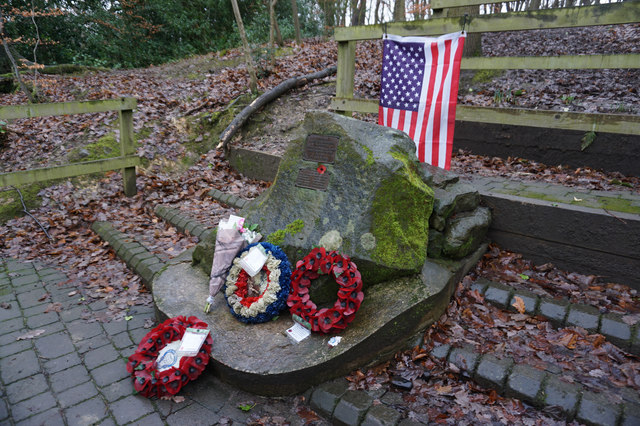This Memorial Day, remember the men of the Mi Amigo
During World War Two, my grandmother took my young aunt June for a weekend in Lowestoft, a seaside town on England’s North Sea coast. One day, as they played on the beach, a flight a US B17 bombers rumbled westward, low overhead, returning from a mission over Nazi occupied Europe. My gran and aunt waved at the planes, then carried on playing. Sometime later the rumbling returned. Coming in from the North Sea was a lone B17. It was even lower than the others and was billowing smoke. My gran didn’t wave to this plane. She watched nervously as it spluttered off to the west, barely clearing the town’s chimney stacks.
I don’t know whether this crew made it back it back to base. But in Endcliffe Park in Sheffield, England, there is a memorial to Lt John Kriegshauser, John Humphrey, Robert Mayfield, Charles Tuttle, Vito Ambrosio, George Williams, Lyle Curtis, Melchor Hernandez, Harry Estabrooks, and Maurice Robbins. They were the crew of the Mi Amigo, a B17, which crashed there on the afternoon of February 22, 1944.


As the local newspaper recorded in 2014,
The plane was attempting to return to its base in Northamptonshire after being attacked by German fighters that fateful day. It had been carrying a 4,000 lb bomb intended to be dropped on a Luftwaffe air station in Aalborg, Denmark, when it was ambushed by enemy machines over the North Sea.
“The bombers were attacked by Focke Wulf 190s,” explains David Harvey, a Dronfield researcher who released a book on the incident in 1994.
“Mi Amigo was seen to take heavy damage, in particular to the engines.
“The bomb load was jettisoned over the sea and she started her way home.”
The story, from there, is taken up by the United States Air Force historical records kept in Montgomery, Alabama. They recall the “extraordinary achievement” of pilot Lieutenant John Kriegshauser who was awarded a posthumous Distinguished Flying Cross for minimising loss of life. “Displaying consummate skill, he piloted the aircraft back to England,” the official records state. “Although unfavourable weather conditions were prevalent, Lt Kriegshauser attempted to locate a field in which to land.
“Engines became inoperative over a heavily built up area (Sheffield) and he was forced to crash-land.
“An English home was directly in the path of the bomber but Lt Kriegshauser, exhibiting an exemplary devotion to duty, manoeuvred the crippled aeroplane over the dwelling. It crashed in a wood approximately 100 yards away. The courage, coolness and skill displayed by Lt Kriegshauser reflect the highest credit on himself and the armed forces of the US.”
…
But for the heroics of the pilot, who avoided homes in Greystones and children playing in the park, it is said the death toll would have been far higher. As it was, not a single person on the ground perished.
“We just did what we could,” remembered Mr Hodgson, a Hillsborough highways worker who had been specially trained in rescue work for the war and who had to cut the bodies from the wreckage.
“We didn’t think about it. We just did it but the only heroes there on that day were the 10 lads who lost their lives.”
“These men sacrificed their lives for a just cause” says Gordon Unsworth of the Sheffield branch of the Royal Air Force Association. So they did, these young men, who smile at us from old photographs, leaving their homes and loved ones in places like Minnesota and travelling across the world.
Rupert Brooke, the great British poet of the First World War, wrote
If I should die, think only this of me;
That there’s some corner of a foreign field
That is forever England.
Thousands of miles from their homes, in my hometown, where the crew of the Mi Amigo died, there is some corner that is forever America.

John Phelan is an economist at the Center of the American Experiment.